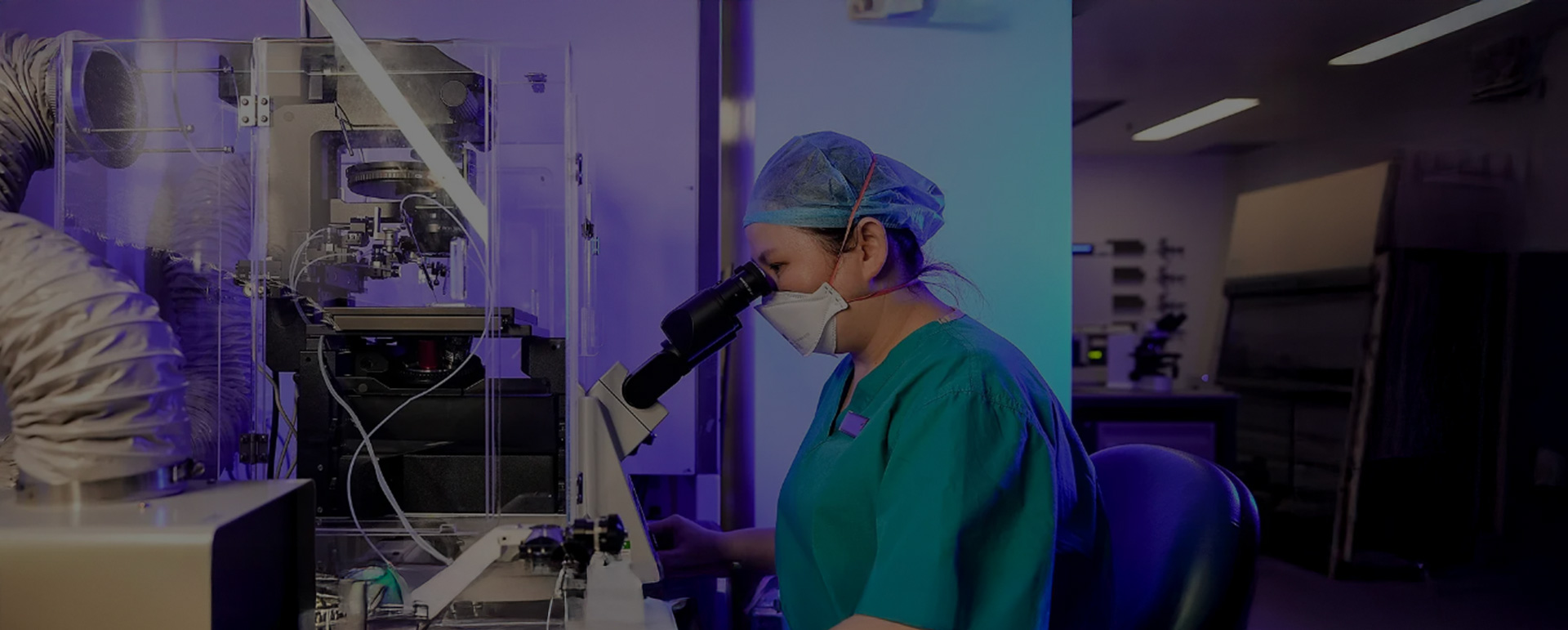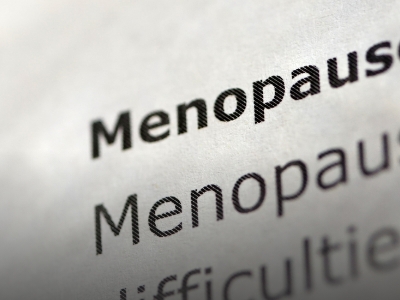Miracle in the making: New advances in fertility care

PUBLISHED ON
SCROLL DOWN
“Infertility isn’t something to hide or feel ashamed of. Thanks to medical advances, couples like us have a real chance at our dream family.”
– Ms Maria Isadora, National University Hospital (NUH) patient
The science behind hope
Ms Maria Isadora and her husband, new parents to baby Sophia, had been trying to conceive for years before seeking help at NUH. They first tried intra-uterine insemination (IUI), then in vitro fertilisation (IVF) when the earlier attempts failed. The first two IVF cycles did not result in pregnancy. After the third embryo transfer, Ms Isadora conceived but suffered a miscarriage.
“It was devastating. But we still had hope.”
PGT-A: A gamechanger in fertility treatment
On the advice of their doctor, Prof P C Wong, Head and Emeritus Consultant, Division of Reproductive Endocrinology and Infertility, Department of Obstetrics and Gynaecology, NUH, the couple explored another option.
"Repeated unsuccessful IVF attempts may be due to chromosomal problems in the embryos,” Prof Wong explained. “This can be excluded through a procedure called preimplantation genetic testing for aneuploidy, or PGT-A.”
What is PGT-A?
PGT-A screens embryos for missing or extra chromosomes — the tiny packages of genes that carry our DNA — after IVF. This helps doctors select the healthiest embryo for transfer, giving each pregnancy a higher chance of success.
As women age, their eggs are more likely to produce embryos with genetic errors, which can affect whether a pregnancy succeeds. By age 40, more than half of a woman’s embryos may contain chromosomal errors, often leading to failed implantations, miscarriage or birth defects such as Down syndrome.
To shed more light on how PGT-A works, A/Prof Samuel Chong, Director of the Preimplantation Genetic Diagnosis Centre and Associate Professor from the Department of Paediatrics, Yong Loo Lin School of Medicine, National University of Singapore (NUS Medicine), explained: “PGT can detect both inherited and spontaneous chromosomal abnormalities. By transferring only embryos with normal chromosomes, the chance of a healthy pregnancy rises dramatically.”
PGT-A is typically recommended for women aged 35 or older, or for those who have experienced multiple miscarriages or failed to conceive after two embryo transfers. A/Prof Chong added that PGT brings not just scientific but emotional benefits.
“Instead of transferring multiple embryos and hoping one works, doctors can now confidently transfer a single healthy embryo. That means fewer miscarriages, lower risk of multiple pregnancies, and a smoother journey overall.”
– A/Prof Samuel Chong
Little Sophia was born on 24 May 2025, a date her parents will never forget. Her arrival marked the end of years of trying and the start of a new chapter made possible through advanced fertility care.
Inside the IVF lab
"Embryologists oversee every stage of IVF, from egg retrieval to embryo selection. Our work demands precision, delicate handling and strict quality control to keep both eggs and embryos safe," said Ms Joyce Elizabeth Mathew, Chief Embryologist, Department of Obstetrics and Gynaecology, NUH.
IVF begins with ovarian stimulation — fertility drugs help the ovaries produce multiple eggs. Once mature, the eggs are retrieved and fertilised in the IVF lab.
Depending on sperm quality, fertilisation is done either conventionally or using intracytoplasmic sperm injection, where a single sperm is injected directly into the egg.
After five to six days of culture, the embryos reach the blastocyst stage — the most advanced stage before implantation.
At this point, embryologists perform a biopsy, removing a few cells from each embryo for PGT-A testing at NUH’s Preimplantation Genetic Diagnosis Centre (PGDC). The cells are then analysed using whole genome amplification, while the embryos are safely frozen and stored in cryogenic tanks.
There are three possible results:
- Euploid: normal chromosome count
- Aneuploid: abnormal chromosome count
- Mosaic: a mix of normal and abnormal cells
Doctors then select the healthiest embryo for transfer. Using a thin catheter, the embryo is placed into the womb — and two weeks later, a blood test confirms whether pregnancy has begun.
A journey fulfilled
With scientific precision guiding each step, Ms Isadora and her husband continued their journey with renewed hope.
When Prof Wong first suggested PGT-A, the couple hesitated as they were worried about risks and costs. But after several failed attempts and one miscarriage, they decided to go ahead.
“Waiting for the results was nerve-wracking,” recalled Ms Isadora. “But the NUH team was incredible. They explained each step, shared updates and treated us with so much compassion. That gave us reassurance and peace.”
One of those who supported her was Ms Muhsinah Binti Abdul Aleem, Assistant Nurse Clinician at NUH. “Fertility care can be emotionally complex,” she said. “We walked with Ms Isadora through every injection, scan and anxious phone call — holding hope with her."
When the PGT-A results came back, only two embryos were found to be normal. Ms Isadora feared her chances were nearly gone. “We reminded her that it only takes one healthy embryo,” said Ms Muhsinah. “When she finally conceived, our whole team celebrated.”
The pregnancy progressed smoothly until the third trimester, when Ms Isadora developed pre-eclampsia and required an emergency Caesarean section. Thankfully, baby Sophia was born healthy.
"Be patient and stay hopeful," said Ms Isadora, reflecting on her own journey.
"It takes time and courage, but every small milestone brings you closer to your dream."
– Ms Maria Isadora
“Parenthood is an incredible blessing. All the trials we faced have made me stronger and more grateful.”
– Ms Maria Isadora
“While we have the scientific know-how, IVF is still a journey. With persistence and resilience, success will come.”
– Prof P C Wong
The Department of Obstetrics and Gynaecology is part of the National University Centre for Women and Children (NUWoC), a national university specialist centre that aims to empower women, children and their families to lead healthier lives.
In consultation with Prof P C Wong, Head and Emeritus Consultant, Division of Reproductive Endocrinology and Infertility, Department of Obstetrics and Gynaecology, NUH; A/Prof Samuel Chong, Director of the Preimplantation Genetic Diagnosis Centre, Department of Obstetrics and Gynaecology, NUH and Associate Professor, Department of Paediatrics, NUS Medicine; Ms Joyce Elizabeth Mathew, Chief Embryologist, Department of Obstetrics and Gynaecology, NUH; and Ms Muhsinah Binti Abdul Aleem, Assistant Nurse Clinician, Department of Obstetrics and Gynaecology, NUH.




